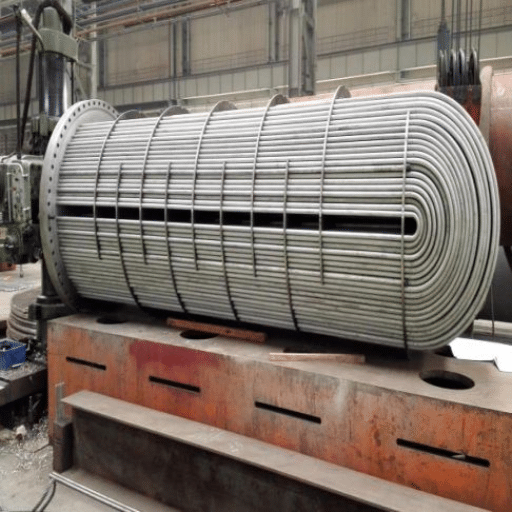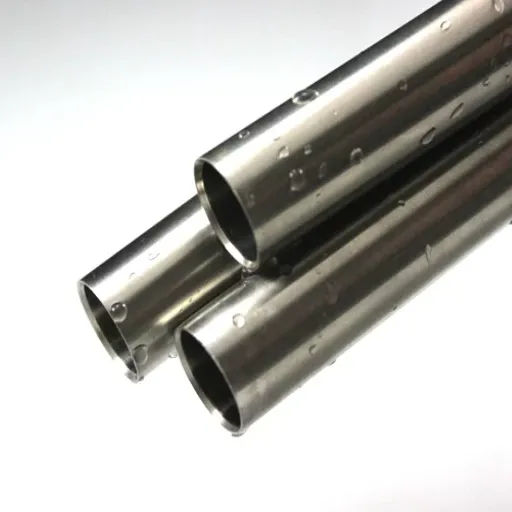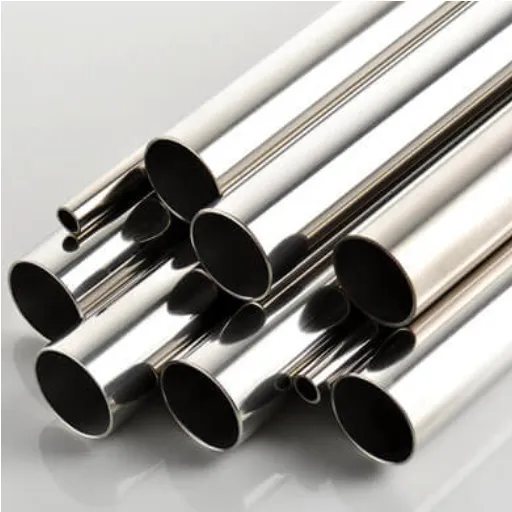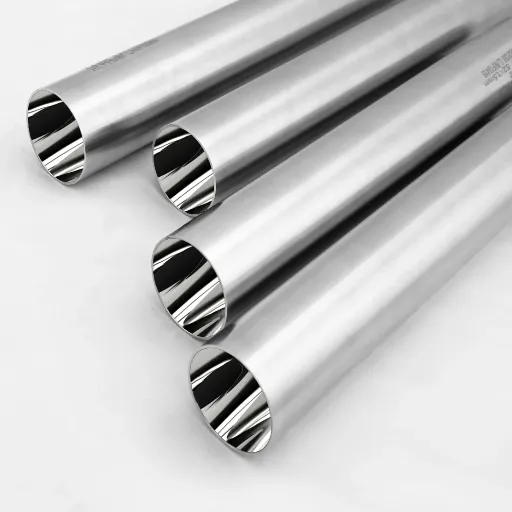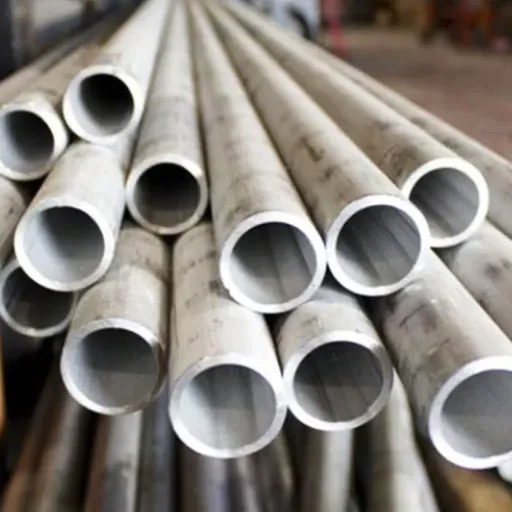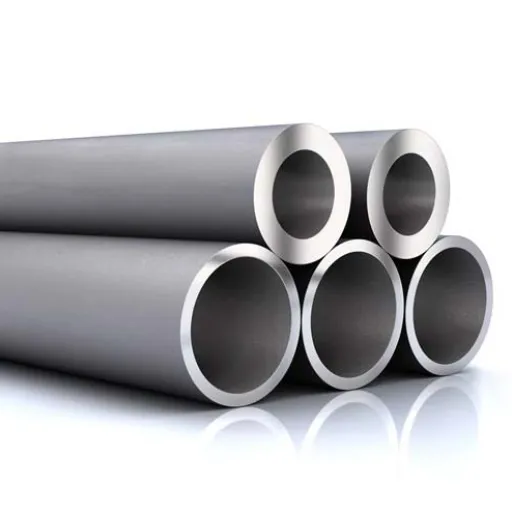In terms of durability, versatility, and efficiency, SUS stainless steel pipes are the best choice for construction and manufacturing. These pipes are famous for their excellent corrosion resistance, high strength, and applicability in many different fields, like architecture, energy, and food processing. However, what exactly is the reason for their reliability and where can you find them for your upcoming project? This blog post is aimed at presenting the critical characteristics of SUS stainless steel pipes, discussing their various uses, and advising where to get reputable suppliers. Are you an industry expert, an engineer, or just someone who’s interested in premium materials? If so, we have provided you with everything necessary to make a wise choice.
Introduction to Stainless Steel Pipes

1What is SUS Stainless Steel?
SUS stainless steel is known as a type of stainless steel that was determined by the Japanese Industrial Standards (JIS). It is very popular because of its great properties such as durability, resistance to corrosion, and versatility. The letter “SUS” means “Steel Use Stainless,” which implies that this steel is the one that can be used in different industries.
🔑 Key Grades:
- SUS304: Known for its general corrosion resistance and its lower price compared to SUS316
- SUS316: Known for its extreme resistance to unfriendly conditions such as salty or acid environments
Hence, these two are among the major factors making SUS stainless steel the first choice in the building, car, food production, and health equipment industries. Its flexibility allows it to be used in both the rough and delicate areas of a building and to provide both the strength and the appearance of quality finishes.
2Overview of Stainless Steel Pipe
Stainless steel pipes are majorly good quality items in several sectors because they are stronger, more durable, and more corrosion-resistant than other materials. They are of course used in construction, oil and gas, chemical processing, and water treatment. The two most common grades of stainless steel pipes are SUS304 and SUS316, which differ according to their specific usage and environment.
📊 Industry Trends:
The latest data from search trends suggest that increasingly industries are looking for stainless steel pipes as their application in green energy and sustainable construction is increasing. Their ability to withstand extreme temperatures and pressures makes them suitable for important infrastructure, while their recyclable property allows them to be in line with global sustainability targets. Stainless steel pipes are also low-maintenance, thus cutting long-term costs and increasing their value over time.
3Importance of Pipe in Various Industries
Pipes are the backbone of the industrial world, and their versatility, durability, and the ability to transport liquids, gases, and even solids make them indispensable. For instance, the oil and gas industry requires pipes for the whole process of extracting, transporting, and delivering crude oil and natural gas – this is how energy is supplied worldwide. The chemical industry also depends heavily on pipes for transporting, among others, chemicals, steam, and water to various parts of the production facility.
At the same time, construction projects cannot do without pipes for plumbing, HVAC systems, and structural applications; pipes indeed provide reliable support and offer distribution systems. According to the latest data from search trends, the demand for both stainless steel and polyethylene pipes is on the rise which is attributed to their increasing use in renewable energy applications and smart infrastructure. This, in turn, signals the continuous evolution of pipes as a solution to modern technology and sustainability challenges, thus confirming their vital role in making the progress of various sectors possible.
Types of Stainless Steel Pipes

Seamless Stainless Steel Pipes
Seamless stainless steel pipes are produced without the existence of a welded seam, giving the pipes the upper hand in strength, durability, and corrosion resistance. Pipes like these are very well recognized in oil and gas, chemical processing, and nuclear power industries that require reliability at high pressure or extreme temperatures.
💡 Market Insight:
Market research indicates that the demand for seamless stainless steel pipes is growing along with their use in smart infrastructure and renewable energy systems. The increasing acceptance of these pipes is due to their ensuring efficient fluid and gas transport while being up to the high standards of modern times concerning sustainability and technological advancements.
Welded Stainless Steel Pipes
Welded stainless steel pipes are present in almost every industry and offer the same strength and durability as well as excellent resistance to corrosion. In the light of the latest data from search trends, one may wonder why these pipes are receiving such widespread attention. Their adaptability and cost-effectiveness are the main reasons.
Welded pipes can be produced in large volumes more easily than seamless alternatives; therefore, they are regarded as a practical solution in the fields of construction, water treatment, automotive, and renewable energy projects. This flexibility, along with their capability of fulfilling modern sustainability and efficiency requirements, accounts for their increased presence in both industrial and consumer markets.
Comparison of 304 and 316 Stainless Steel
Among the different grades of stainless steel available, 304 and 316 are the two that are most commonly found and they are each characterized by their respective advantages in different applications. The two are both classified as austenitic stainless steels and possess similar properties, namely, they are both highly resistant to corrosion and have a long lifespan. Nevertheless, the main difference is in the alloying elements used, especially the addition of molybdenum in 316-grade steel.
🚀 Industry Innovation:
The fittings industry together with the continuous progress of the stainless steel manufacturing has experienced technical advances in precision and customization. A recent trend shows that high-performance alloys and special coatings are more and more being used to increase the strength and corrosion resistance in the case of such fittings, thus industries like chemical processing, oil and gas, and building which usually have very difficult demands can be served.
Importance of Proper Fitting Selection
The correct selection of fittings is of paramount importance in guaranteeing an efficient, safe, and long-lasting system. The selection of the right type, material, and size of fittings will enable the prevention of leaks, contribute to the reduction of maintenance costs, and thus improve the overall system performance.
⚠️ Critical Considerations:
- Compatibility with specific working conditions (pressure, temperature, chemical exposure)
- Material selection (duplex stainless steel or tailored coatings for challenging environments)
- Prevention of failures, costly downtimes, and accident risks
- Compliance with safety and regulatory standards
Furthermore, the latest statistics coming from search engines show that the issue of the compatibility of fittings with the specific working conditions, such as pressure, temperature, and exposure to chemicals, has become increasingly important. Ignoring to take these factors into account when fitting can result in failures, costly downtimes, and risks of accidents. In this regard, industries are increasingly looking for fittings made from advanced materials like duplex stainless steel or those with tailored coatings as a means to cope with such challenges.
Choosing a Supplier for SUS Stainless Steel Pipes

Factors to Consider When Selecting a Supplier
There are several factors that demand attention to be positive about quality, reliability, and cost efficiency when a supplier is selected for SUS stainless steel pipes. One of the factors to look at is the supplier’s reputation which is very important; the reviews, certifications, and industry experience are the tools that give one insight about their reliability and commitment to keep with the standards.
✓ Supplier Selection Checklist
1. Reputation & Experience
- Customer reviews
- Industry certifications
- Years of experience
2. Product Quality
- Testing certifications
- ISO/ASTM compliance
- Performance guarantees
3. Customization
- Custom requirements capability
- Specified grades availability
- Project flexibility
4. Logistics
- Delivery timeframes
- Distribution network
- Operational risk reduction
5. Pricing
- Competitive pricing
- Quality assurance balance
- Long-term value
6. Sustainability & Support
- Eco-friendly practices
- Technical support
- Maintenance guidance
Product quality is the second issue that has to be addressed; the supplier must provide evidence of the issue in every possible way testing certifications, compliance with international standards like ISO or ASTM that promise performance, and so on.
Further, the supplier’s capability to satisfy your request for custom requirements or specified grades of stainless steel should be taken into consideration, as this kind of flexibility usually means that the supplier is willing to cooperate with the project requirements. The delivery time and the logistics capabilities are also a determining factor; a supplier that has a good distribution network will not only deliver on time but also reduce the operational risks.
📊 Market Trends:
Recent search data and trends show that businesses are less and less inclined to work with suppliers that do not practice sustainability and do not offer technical support for product implementation. Suppliers that embrace eco-friendly practices and materials, as well as those who are well-versed in customer guidance and maintenance, are emerging as the most preferred options in the market. Eventually, by sifting these factors, companies can create relationships that are not only advantageous for the short run but also for the long run.
Inventory and Availability
In the case of inventory and availability, it is essential to sync the product portfolio with the current market demand reflected by search engine trends. According to the fresh data, products that are in stock and also meet the gradually increasing demand for sustainable and customizable options are on the top of consumer interest lists.
Businesses are continuously looking for partners who can keep a steady supply of goods to avoid disruptions, and in particular, those who not only do so but also provide quick delivery and use eco-friendly packaging. By keeping an eye on such trends, companies will be able to devise inventory strategies that are both competitive and aligned with customers’ expectations.
Contact Us for More Information
In the light of the latest data from search engines, it is apparent that consumers’ preferences are heavily tilted towards those products that could be classified as “sustainable” and “efficient” at the same time. A question we often get asked is, “What can businesses do in order to be one step ahead of these inventory trends?”
💡 Expert Recommendation
The response is in making use of data analytics that are very accurate for demand prediction, suppliers that support eco-friendly practices and quick delivery solutions should be the ones you partner with, and can be direct with your customers. Following such a strategy will not only allow businesses to satisfy the market but to also be the ones who set the market standards. For personalized advice and further assistance, do not hesitate to contact us today!
✅ Selection Guide:
When deciding between the two, it is important to take into account the environmental factors and durability needed. If the application is going to be around chlorides or extreme conditions, then 316 is the right choice. On the other hand, when the environment is less demanding, 304 is the safe and economical choice.
Properties of SUS Stainless Steel Pipes
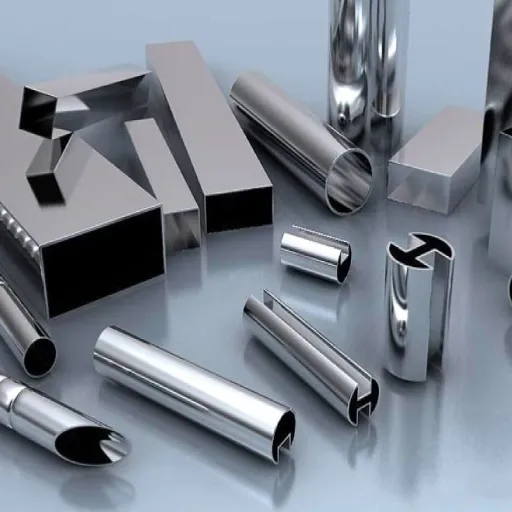
Corrosion Resistance
SUS pipes made of stainless steel are highly prized not only for their great ability to resist but also for their being fit for a wide range of industries like chemical processing, marine environments, and food handling. The corrosion resistance is largely dependent on the kind of stainless steel that is used. For instance, SUS 304 is highly resistant to oxidation in mild environments but SUS 316 which contains more molybdenum is resistant to the most severe conditions including exposure to chlorides, seawater, and acidic environments.
📈 Performance Data:
Data from recent research has shown that on average SUS 316 stainless steel is 2-3 times less susceptible to pitting corrosion than SUS 304, especially in the case of chloride-rich environments. This built-in advantage makes SUS 316 the winner for really harsh industrial applications like desalination in plants or buildings near the sea.
Durability and Strength
Known for its outstanding durability and strength, SUS 316 stainless steel is the material of choice that is able to withstand even the most extreme environmental conditions. Recent studies have shown that the material in question has higher tensile strength as compared to SUS 304 making it a good candidate for applications where the presence of chemicals and harsh marine conditions may occur.
Stress corrosion cracking resistance is another area where SUS 316 has the upper hand, thus prolonging the life of the structure in case of an unfavorable environment. The combination of corrosion resistance and strong mechanical properties plus the ability to perform under both strain and adverse conditions makes it very desirable for critical industries.
Wall Thickness and Size Range
The SUS 316 range of pipes and tubing features a wide selection of wall thicknesses and sizes, hence they will certainly suit the different needs of the different industries.
📏 Specifications:
- Wall Thickness Range: 0.5 mm to 30 mm
- Outer Diameter Range: 6 mm to 610 mm
These variations allow for the required flexibility for using the products in diverse applications from light structures to heavy-duty industrial systems. The offering of a broad range means that the products of SUS 316 can be customized to specific needs, whether for precision instruments or large-scale processing facilities.
Applications of SUS Stainless Steel Pipes

Industrial Applications
Stainless steel pipes of the SUS type have their extraordinary strength, non-corrosive character, and adaptability destined to play important roles in many industrial sectors. These pipes have found their way into chemical processing plants heavily, where they have their resistance to harsh chemicals and extreme temperatures being widely required. The same goes for the oil and gas industry, which has to depend on SUS stainless steel pipes for the efficient and safe transport of substances under high pressure and in rigorous conditions.
🏭 Chemical Processing
Resistance to harsh chemicals and extreme temperatures
⚡ Oil & Gas
Efficient transport under high pressure and rigorous conditions
🍽️ Food & Beverage
Safe fluid transport and hygienic properties
♻️ Renewable Energy
Solar and wind power generation applications
In addition, the food and beverage industry is one to mention, which now in all probability, heavily relies on the beneficial qualities of stainless steel, as these pipes can transport fluids safely and keep the areas clean. The latest statistics also point towards the fact that there is a gradual increase in the renewable energy sectors that are asking for these pipes, particularly solar and wind power generation, where resistance to outside influences is vital.
Construction and Infrastructure
SUS stainless steel pipes are imperative in the construction and infrastructure industry on account of their superior longevity, anti-corrosive properties, and low upkeep. According to the most recent information available from search engine trends, there has been a progressive increase in the number of inquiries related to the use of stainless steel pipes in green building. This shows that more and more people are interested in using eco-friendly materials in construction, which is a trend that is gaining ground in the construction field.
Moreover, these pipes are frequently chosen for their durability and wide range of extreme environmental conditions, which makes them perfect for major infrastructure projects like bridges, water systems, and skyscrapers. The combination of SUS stainless steel pipes’ strength, durability, and environmental friendliness makes them an integral part of modern urban development’s infrastructural frameworks.
Food and Beverage Industry
SUS stainless steel pipes are of paramount importance in the food and beverage sector, owing to their hygienic properties and non-corrosive nature. “What is the reason behind the preference of stainless steel for food and beverage applications?” is one of the most frequently asked questions.
🔬 Why Stainless Steel?
- Prevents contamination
- Inhibits microbial proliferation
- Withstands harsh chemical cleaning operations
- Maintains inert surface that preserves aromas and quality
The latest data from search engines shows that stainless steel becomes the material of choice because it neither lets contamination happen nor it allows microbes to proliferate and also withstands the cleaning operations that use harsh chemicals. Its inert surface guarantees that the aromas and quality of foods and beverages remain unimpaired, which is why it is used in breweries, dairy processing plants, and commercial kitchens, to name a few. The combination of such reliability and the aforementioned long term durability only serves to solidify the place of stainless steel in the industry’s safety and quality maintenance.
Welding and Fitting of Stainless Steel Pipes

Welding Techniques for Stainless Steel
Welding to stainless steel has always been a very hard job and different techniques had to be adopted in order to have welds that are strong, durable, and resistant to corrosion. The most commonly used methods include:
🔧 Common Welding Methods:
- Gas Tungsten Arc Welding (GTAW or TIG): Excellent quality welds, ideal for thin materials
- Gas Metal Arc Welding (GMAW or MIG): Fast and efficient processing
- Shielded Metal Arc Welding (SMAW): Versatile for maintenance and repair work
Despite the various welders’ capabilities, problems like sensitization, distortion, and contamination can still be encountered; therefore, it is vital always to use the right filler materials, keep the work area clean and controlled heat input. Technological advances, such as laser beam welding and automated systems, have made it possible to achieve even greater precision and uniformity in the welding of stainless steels, thus eliminating the chances of welding defects and at the same time making it more processing time-efficient in industrial applications.
Types of Stainless Steel Fittings
Stainless steel fittings are produced in different types, which are all for certain applications, the right ones must be determined according to the needs of strength, durability, and the resistance to corrosion. Below are some of the most common types:
Frequently Asked Questions (FAQ)
❓ What are the differences between welded and seamless stainless steel tubes?
The process of production of welded pipes involves taking a steel strip, bringing its two edges up, and melting them into one while seamless pipes are obtained from a solid round steel billet without making any welds. A seamless pipe that has the same dimension as that of a weld pipe is to be pressurized in the same manner. Uniform strength and reliability are the properties making seamless pipes of preferred selection for high-pressure applications. On the contrary, the welded ones are more economical and boasted with availability in larger sizes. The manufacturers present both the kinds in all the attractive sizes thereby serving various uses. Assess first the nominal size, pressure requirement, and risk of corrosion if you are in dilemma about which one to go with.
❓ What are the steps to follow to buy fittings for stainless steel which will be right for my project?
Choosing right stainless steel fittings always is determined by the specific conditions of your piping system, especially the nature of fluid, the temperature and pressure in the system. First think about issues like quality of steel, the size of pipes, and whether you require welded or seamless joints. Proper fittings will not only fit the pipes but also help create a tight seal which would avoid leaks. For instances, the commonly used types of fittings are reducing coupling, flanges, and elbows. A trained supplier will be of great help to you in selecting the stainless-steel fittings that will be compatible with your project.
❓ What impact do ASTM standards have on stainless steel pipes?
The standards of ASTM are very much influential for the manufacturing process and quality control of stainless steel pipes. These standards define the specifications for the materials, the dimensions, and the performance criteria hence making the products very consistent and reliable all over. ASTM pipes (like ASTM A312 for seamless and welded stainless steel pipes) not only provide a very high-quality product but also a safe one in a wide variety of applications. The observance of these standards is of utmost importance for the retaining of the high corrosion resistance and durability, which are very much required in harsh surroundings. Whenever you source stainless steel materials, remember to check if they comply with pertinent ASTM standards relating to your particular needs.
❓ Is SUS stainless steel pipe good for high temperature applications?
Yes, SUS stainless steel pipes are made to be able to bear the heat, and so power plants and chemical processing factories can use them. The resistance to fire is a chemical property that depends greatly on the alloy used, especially in 316L and 310 grades which are fit for these conditions. When it comes to picking the right grade and material, remember that the specific working temperature and any possible corrosive substances in the area must be considered. The durability and efficiency of the piping system are significantly dependant on the correct selection of the grade and the type of the stainless steel. It is best always to consult with a supplier who is well-trained in this field regarding the most suitable materials for high-temperature applications.
❓ What is the best way to maintain stainless steel tubing?
The upkeep of stainless steel tubing entails cleaning and inspecting operations on a routine basis to draw out its lifespan and to retain its performance. The trouble incurred in cleaning procedure is almost bare, since, it is the dirt, grease, or contaminants that lead to corrosion over time. A mild detergent and a soft cloth is the most frequent means for conducting typical maintenance. A caustic cleaner for instance could be used for treating tougher stains or corrosion. Also, a regular inspection for wear and damage is recommended, and any tubing or fitting that shows signs of aging should be replaced. The pipes you so carefully maintain will not only last longer but will also be more effective in application.
Reference Sources
🎓 Virginia Tech (VTechWorks)
A detailed study on the microstructural characterization of SUS 444 ferritic stainless steel, discussing its applications in reducing automotive weight and improving fuel efficiency.
Topic: Microstructural Characterization of SUS 444 Ferritic Stainless Steel
🎓 Stanford University
A document on the high-temperature characteristics of stainless steels, including their versatility and performance in elevated temperatures.
🎓 North Carolina State University (NCSU)
A study on the pressure capacity of cylindrical steel containment vessels, referencing SUS 304 and SUS 316 stainless steel pipes.
Topic: Pressure Capacity of a Cylindrical Steel Containment Vessel
🎯 Final Thoughts
SUS stainless steel pipes represent a premium solution for industries demanding reliability, longevity, and performance excellence. From their superior corrosion resistance to their adaptability across diverse applications—ranging from food processing to renewable energy—these materials continue to set the standard for quality and sustainability. By understanding the critical differences between grades like SUS 304 and SUS 316, selecting appropriate welding techniques and fittings, and partnering with reputable suppliers who prioritize quality and environmental responsibility, you can ensure your project’s success. Whether you’re embarking on a large-scale infrastructure development or seeking materials for specialized industrial applications, the comprehensive insights provided in this guide equip you to make informed, confident decisions that will deliver lasting value and performance.


